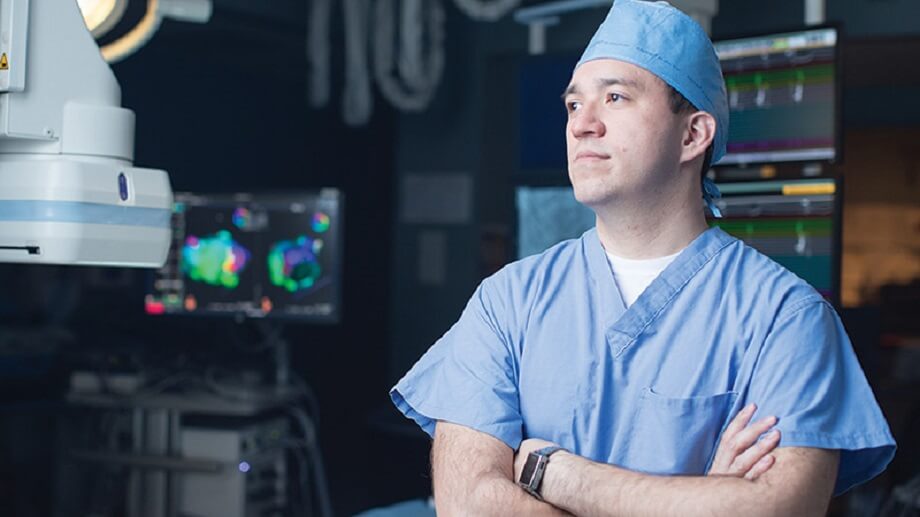The heart plays the important role of pumping blood throughout the body following a systematic rhythm. The muscles in the heart have a complex electrical system that coordinates this rhythm, which helps pump blood throughout the body. When the electrical system becomes inefficient, problems like arrhythmia and other heart diseases can arise. A report by the University of Ottawa Heart Institute reveals that up to 10 million people in North America may suffer atrial fibrillation by 2050. Atrial fibrillation is a severe form of arrhythmia that can lead to stroke, heart failure, and other complications.
The condition occurs when the upper chamber of the heart develops irregular rhythms. The other common types of arrhythmias include bradycardia, supraventricular tachycardia and ventricular tachycardia. Bradycardia is a serious condition that can be explained as an acute slow heart rate. The condition can cause fainting or syncope, difficulty breathing, memory problems and even death in the worst-case scenario. Ventricular tachycardia is another serious condition that affects the ventricles in the lower chambers of the heart.
The condition arises when the heart begins to beat rapidly. Ventricular tachycardia can cause sudden death if sufficient blood is not evacuated from the heart chamber in good time. The main symptom of the disease is loss of consciousness. Supraventricular tachycardia is a type of rapid heart rate characterized by the following symptoms: palpitations, angina, breathing difficulties and dizziness or fainting. The condition usually begins at the point where the lower and upper heart chambers congregate. This vital electrical connection point is also called the atrioventricular node.
How an Electrophysiologist can help
Electrophysiology is the study of the heart’s electrical system or activity. Cardiac electrophysiologists play an important role in the treatment of arrhythmia and other heart complications. According to Hopkins Medicine, arrhythmia specialists are trained to diagnose and correct abnormalities affecting the heart rhythm. The abnormalities include cardiac arrest, peripheral artery disease, congestive heart failure and coronary artery and other cardiac conditions. Electrophysiologists usually test for arrhythmias using the following techniques and tools:
• Electrocardiogram (EKG or ECG)
• Echocardiogram
• Blood testing
• Stress testing
• Implantable loop recorder
• Electrophysiology study
The ECG is a special device that records the electrical activity happening inside the heart chamber. This testing is conducted when the heart is at rest. An electrophysiologist can also order an exercise stress test or treadmill test to check for sign of irregular heart rhythms. This test is done when the heart is under stress (exercise). Using information collated from diagnostic examination, test results and the patient’s medical report, a physician will create a treatment plan to help manage the electrical abnormality in question.
Treatment for arrhythmias is often done using defibrillation, catheter ablation, medications and cardiopulmonary resuscitation (CPR). Treatment using medications is usually the first step of intervention. Depending on the diagnosis, the doctor may prescribe anti-arrhythmic medications to regulate arrhythmias in order to suppress symptoms, other effective classes of drugs for controlling arrhythmia are beta blockers that work to reduce blood pressure. To resuscitate the patient from lethal arrhythmias, a defibrillator emits electric shocks designed to normalize the heartbeat.
Catheter ablation is essentially a slim tube placed to eliminate abnormal electrical tissue inside the chambers of the heart. As part of the correction, electrophysiologist may also recommend the implantation of certain medical devices to control or reset the rhythm of the heart. The devices include a pacemaker, cardiac resynchronization therapy (CRT) device and implantable cardioverter defibrillator (ICD). A pacemaker is a small apparatus placed in the chest area with leads or wires into the heart muscle to produce electrical signals that prevent bradycardia.
The ICD works just as the pacemaker, even though it does much more to restore normal heartbeat. The device monitors the heartbeat and sends a controlled electrical shock if the device believes the patient could be dying from a tachy-arrythmia. A CRT device is critical in the treatment of heart failure and arrhythmias as it stimulates and coordinates the way the heart pumps blood. The device is an upgrade to the traditional ICD system or pacemaker. The other important treatment is lifestyle changes. The treatment emphasizes regular exercise and nutrition changes with the aim of normalizing the heart rate and enhancing the patient’s overall well-being.
Ohio Electrophysiology Expert – Allen Amorn
Dr. Allen Amorn is a leading electrophysiologist based in the town of Poland, Ohio. He obtained his medical degree at Northeast Ohio Medical University and has been practicing for the last 15 years. Besides his primary specialty of clinical cardiac electrophysiology, Dr. Amorn is also an expert in cardiovascular disease.
